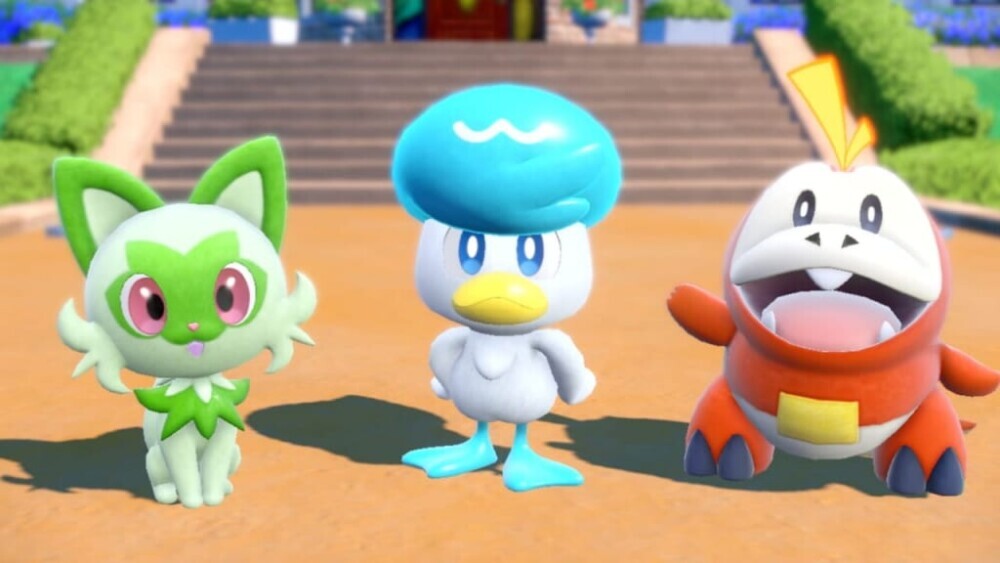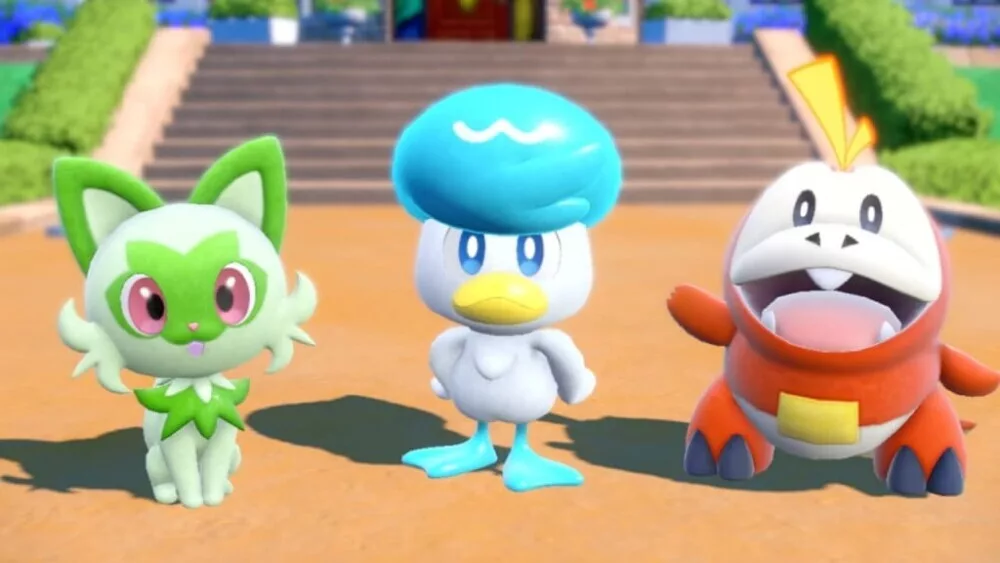
So, you might be a new or returning Pokémon fan diving into the colorful world of Scarlet (and Violet), and you’re probably itching to know what makes up the strongest team. Here’s some solid truth: building a powerhouse team is more than just stacking up on legendary Pokémon. It’s all about strategy, synergy, and knowing your Pokémon’s strengths and weaknesses.
Let’s first talk about team synergy. Say that you’re in a team as a group of friends, each with unique talents. When those talents complement each other, that’s when magic happens. Your starter Pokémon is your ride-or-die, setting the stage for your future team composition. Think about Water, Grass and Fire. Each has its perks and pitfalls, so choose wisely.
Moving on to the phases of the game—early, mid, and late game—each comes with its own team strategies and challenges. In the early stages, flexibility is key as you adapt to minimal resources. As you progress to mid-game, you’ll refine your team, evolving individuals and honing in on specific strategies. By the time you hit late-game, it’s about polishing your team dynamics to conquer the toughest challenges.
Top teams in Scarlet aren’t only about battling. Navigating Gym Leaders and the story require just as much strategic thinking. You want Pokémon that can handle diverse situations, ensuring a smoother journey without excessive grinding. Remember, a team that’s easy to use and versatile will always have the upper hand.
Early Game: Assembling a Balanced Team
Kicking off your adventure in Pokémon Scarlet, the early game is where you lay down the foundation of your team. Your starter Pokémon is at the heart of this journey. Fuecoco, Sprigatito, or Quaxly each bring their own brand of flair and boost attacks, depending on their type and the situation
- Fuecoco offers a boost to Fire-type attacks
- Sprigatito offers a boost to Grass-type attacks
- Quaxly offers a boost to Water-type attacks
Once your starter is picked, it’s time to size up your squad with sensible choices. Charcadet is the perfect candidate to add some firepower, especially when it evolves later. It’s a strong contender that can outmatch many early threats. Pair it with Paldean Wooper for its ground and poison typing. Wooper’s capabilities help counter electric types and add depth to your strategy.
Rookidee is a natural pick, adding flying-type coverage that’s essential early on. Its evolution line is reliable and brings versatility to battles. Shinx is another electric powerhouse that complements fire-type starters well, zapping away water-type foes that might give you a hard time.
Having one slot devoted to Nacli or Magikarp prepares you for different encounters. Nacli’s defensive prowess can save the day in tight spots, while a little patience with Magikarp leads to Gyarados, a beast in later stages. This mix gives flexibility and covers a range of types.
Your goal here is a team that isn’t just powerful, but smart. Match Pokémon to play to their strengths and patch up weaknesses. This approach clears early game challenges with minimal hassle and sets a solid base for the mid-game phase.
Mid-Game: Transitioning and Refining Your Team
Mid-game in Pokémon Scarlet is where you really start to see your early efforts pay off. Your starter, now evolved into Floragato, Crocalor, or Quaxwell, takes on a more pivotal role. These mid-evolutions are robust, adding heft to your battles and setting a foundation for future challenges.
Armarouge or Ceruledge step in as game-changers. These evolutions of Charcadet not only bring increased power but also diversify your strategic options. Whether you lean towards the psychic prowess of Armarouge or the ghostly might of Ceruledge, making this choice boosts your team’s synergy.
Corvisquire is another major player here. Its flying-type moves offer an edge against many mid-game opponents. Partner it with Gyarados or Naclstack, depending on which route suits your evolving playstyle. Gyarados becomes a powerhouse with the right moves, while Naclstack provides a strong defense.
On the tactical side, Clodsire and Annihilape become more relevant. Clodsire’s bulk and versatility cover several gaps your team might face, especially with its ground and poison typing. Annihilape, evolving from Primeape, can wreak havoc with its unique typing and move set, creating unexpected opportunities in battle.
Focus on refining and transitioning your team in these stages. Your Pokémon pairings should now reflect a more nuanced strategy, allowing for a seamless experience through tougher challenges. The right adjustments here prepare you not just for the late game but for how you manage complex battle scenarios.
Late Game: Crafting an Elite Team
As we step into the late game of Pokémon Scarlet, the stakes are higher, and so are the rewards. This is where your team needs to shine with the full evolution of your starter: Meowscarada, Quaquaval, or Skeledirge. Each has its unique take on power, bringing a broader range of abilities to crush tough opponents.
Now, let’s talk about the incredible Palafin in Hero Form. This transformation is not just cosmetic; it gives your team a powerhouse that can substantially tip the odds in battle. Pairing Palafin’s heroics with Arcanine’s robust offense and strategic versatility lets you handle more varied threats that come your way.
Gholdengo is another powerhouse, but it takes some work. Requiring 999 Gimmighoul Coins to evolve, it’s a challenge worth undertaking for a Pokémon that can dish out and absorb damage efficiently. Strengthening your roster with this tricky gem can be game-changing.
Adding Tyranitar to the mix ramps up your team’s coverage tremendously. Its type combination allows you to dispatch a wide variety of opponents with ease. Baxcalibur rounds out the team as a formidable dragon-type attacker, ensuring you’ve got the firepower to face any elite challenge.
In the late game, having well-rounded, elite Pokémon isn’t just about raw power; it’s about precision, adaptability, and maximizing each Pokémon’s strengths. Consider matchups carefully, use type advantages strategically, and ensure your team synergy accounts for a wide array of challenges. This approach not only makes you a formidable trainer but also ensures that your journey continues to be both thrilling and rewarding.
Closing Thoughts
I hope this guide has helped you gather ideas about how to build your team! The secret is using the right strategy at different points in the game, and matching the correct Pokémon together is essential for assured and consistent victory. Let me know in the comments, which team combinations are you thinking of giving a try?
About Julianne
Julianne is the founder and writer for the blog articles here on Power Player Zone – a nurturing online space for gamers to learn more about their passion, no matter their background or identity. As an introverted female gamer for the past 5 years, Julianne strives for inclusivity in her mission to spread the joy of video games to everyone; for her, games aren’t just for fun – they allow us to gain insight into ourselves and the vibrant cultures and communities in which we live.


Great breakdown of team-building strategy! I love how you emphasize synergy over just stacking legendaries. How would you adjust team composition for someone focusing more on competitive play versus just completing the story? Also, with the rise of Tera Types, how much do they impact the overall strength of a team in Pokémon Scarlet? Do you have a favorite late-game Pokémon that you think is underrated but highly effective in battle? Looking forward to your thoughts!
Thanks for stopping by, Zachary! I think it’s important to find your own certain play style in competitive play, so what you find that suits you is more likely to guide you in incorporating Pokemon into your team that fits with your own strategies. Completing the story feels a bit more restrictive in what combinations you can pick from to ensure you get through the campaign in a timely fashion and with minimal frustration. So, I would recommend those just playing through the story to focus on implementing Pokemon that I’ve suggested such as Quaxly in the early game.
As for Tera Types, I think they greatly impact your team’s overall strength since they can change a Pokemon’s defensive type. This will be useful for increasing the power of moves which match that type and should be able to give you the edge.
Personally, I think not enough is being said about Baxcalibur. While this Pokemon is quite slow and is held down by this, it can use Ice and Dragon Type moves, and has quite a large attack power! I think Baxcalibur should be used more often as a back-up at the very least.